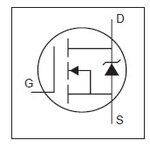rajaram04
Advanced Member level 3

Hello sir
i am designing some basic circuits like astable , bistable multivibrator etc etc etc using 555 timer IC with Vcc=12 volts
But i ve to apply the output to drive a decorative lighting device (which is too operating on 12 volts) but i am unable to drive it directly , so please help me in designing an amp.between load & timer so as to get proper 12 volts out
i am designing some basic circuits like astable , bistable multivibrator etc etc etc using 555 timer IC with Vcc=12 volts
But i ve to apply the output to drive a decorative lighting device (which is too operating on 12 volts) but i am unable to drive it directly , so please help me in designing an amp.between load & timer so as to get proper 12 volts out




